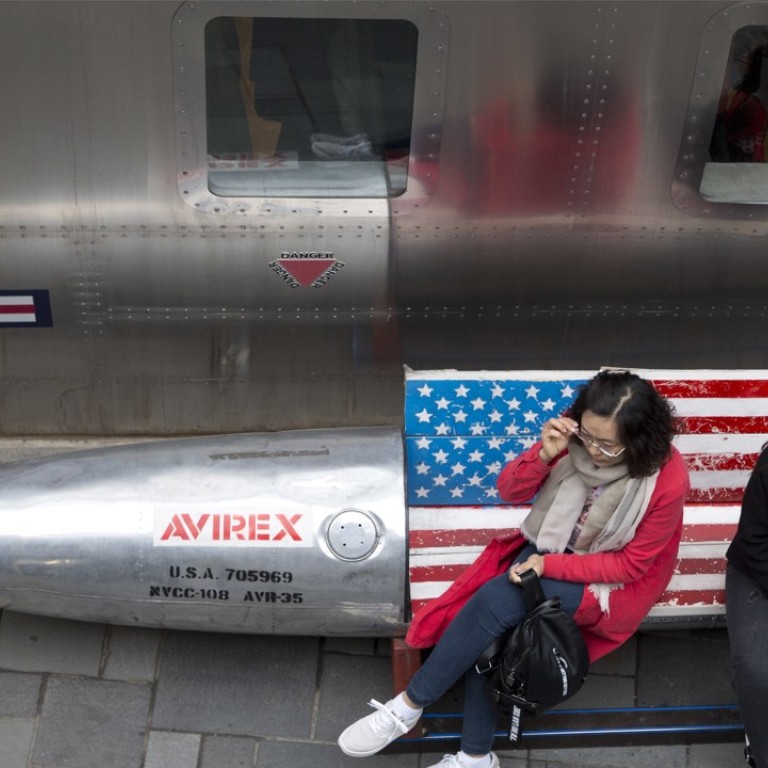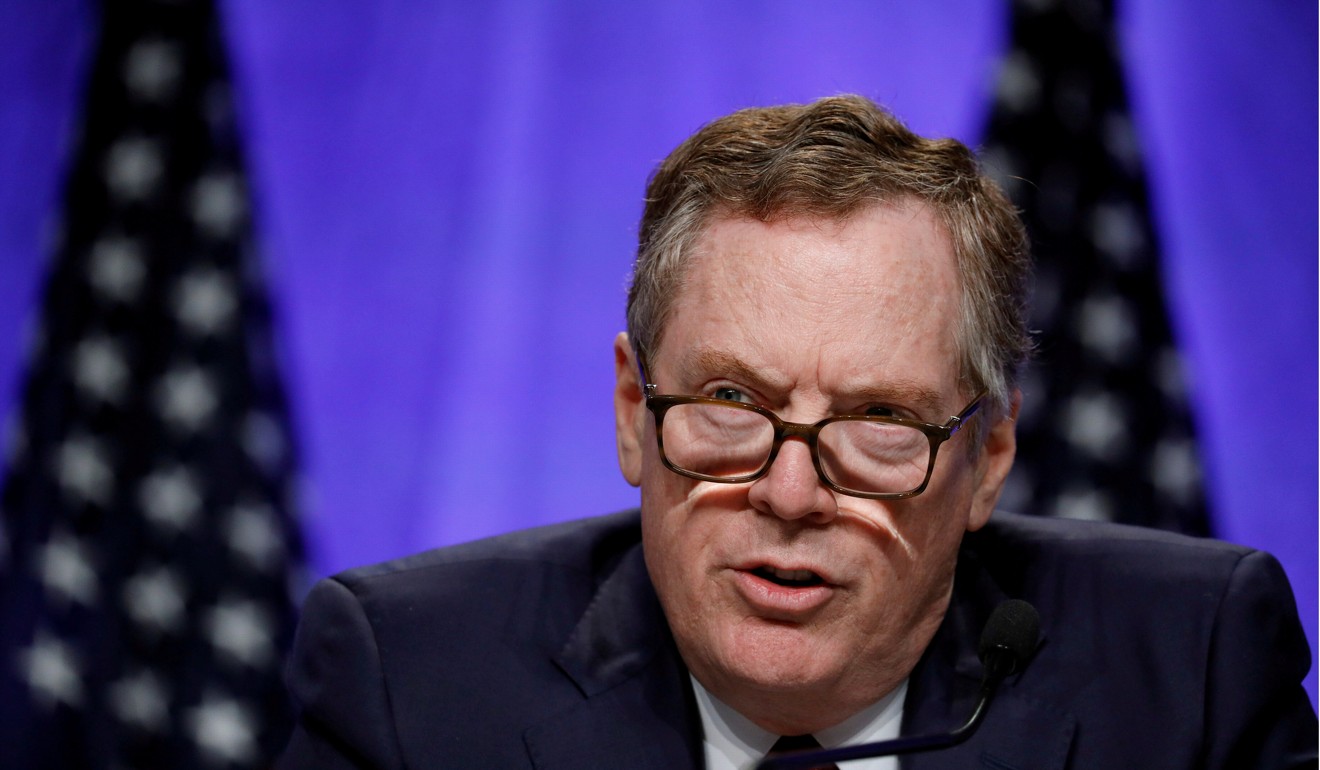Advertisement
Advertisement

Trump’s flaws should not distract from the greater imperfections of US-China trade relations
Robert Boxwell says Washington was misled into supporting China’s accession to the World Trade Organisation and it is time for the US to return to trading with like-minded partners
Perhaps the best place to begin understanding why President Donald Trump’s administration is headed into a trade confrontation with Beijing is Robert Lighthizer’s testimony before the US-China Economic and Security Review Commission in 2010. Ambassador Lighthizer, now the US trade representative, provides much of the intellectual heft behind Trump’s attempt to fulfil what many see as his most important campaign promise – to stop the pillaging of the American economy by mercantilist Beijing.
Lighthizer detailed how US policymakers and the public were told repeatedly by Bill Clinton’s administration that China’s accession to the World Trade Organisation would lead to significant economic and trade benefits for the US, how those promises largely didn’t come true, how they probably never could have come true given the fundamental incompatibility of China’s economic and political system with the West’s conception of the WTO, and how “US policymakers significantly misjudged the incentives for Western businesses to shift their operations to China and serve the US market from there”.

What happens to ‘Made in China 2025’ as trade war fears grow
China has been waging a trade war on the US – the most open economy in the world, for more than four decades. Beijing’s state-directed world view is inimical to the democratic capitalist societies of the West and trade is one of several fronts Beijing uses to strengthen China in the hope of asserting its ideology beyond its shores. Trump, as imperfect as he may be, is the first American president to try to do something about it.
The real value, however, in the tariffs may be simply forcing the conversation about the problem in the US and among its allies
Using interesting legal bases, Trump has chosen a blunt approach of applying tariffs to Chinese goods coming into the US. His first, on steel and aluminium, are aimed at China’s overcapacity in those two industries and its consequent dumping of products that harms producers worldwide. While China’s direct steel and aluminium exports to the US appear small, more come through “transshipments” of Chinese products via other countries to disguise their origin. The real value, however, in the tariffs may be simply forcing the conversation about the problem in the US and among its allies. A second round of tariffs aim to punish Beijing for the ongoing lack of intellectual property protection that hurts American businesses.
One can envision a few scenarios in the wake of Trump’s actions. Trump’s frequent use of the term “America First” is derided by those who say he is leading the US into isolation. But, like the initial announcement of tariffs, “America First” is being used to stake out a negotiating position. It’s impossible for the US to withdraw from today’s world.
US tariffs? Chinese steelmakers say they have other things to worry about
In Trump’s ‘trade war’, the Australian and Japanese currencies are set to become collateral damage
This inability to withdraw, coupled with the reality of strength in numbers, gives weight to an argument for the US rejoining the Trans-Pacific Partnership (TPP), the trade pact from which Trump withdrew on his first day in office. TPP comprises 11 American allies and friends, including developing economies like Chile, Malaysia, Mexico and Vietnam. China is not a member. Opponents of globalisation argue that joining the TPP may simply replace China with other low-labour-cost countries. This may be true, but not every American job that went to China is coming home. Since none of the TPP countries is considered a “strategic competitor” by the US, they seem like better alternatives.
It’s not far-fetched to foresee a day when the WTO ceases to exist and the world’s like-minded capitalist democracies return to trading among themselves in a new institution
A TPP that includes the US may lead to further expansion of membership to the UK, European Union and others that have largely played by Western rules which lifted living standards globally for seven decades. It’s not far-fetched to foresee a day when the WTO ceases to exist and the world’s like-minded capitalist democracies return to trading among themselves in a new institution. The General Agreement on Tariffs and Trade, the WTO’s predecessor, began as such a club.
It’s senseless to continue negotiating with Beijing and hope for a different outcome. The primary argument hyped by the Clinton administration to convince Congress was that China’s accession to the WTO would lead to the rule of law and political reform there. The past several years indicate the opposite is happening.
Beijing’s response to tariffs shows the futility of trying to negotiate. While the US targeted industries in China whose large overcapacity is harming Western competitors, Beijing’s response targets Trump’s middle-class voters. Like him or not, Trump is trying to fix an economic problem that Beijing caused and is determined to prolong; Beijing is responding with a political attack.
China boosts intellectual property protection – for its own tech at least
Many of those who argue for further negotiations, or say deficits don’t matter, have been financial winners to date by busying around China’s economy. Investment banks, private equity firms, lawyers, companies that shifted labour-intensive activities to dollar-an-hour sweatshops and electronics assembly plants on China’s coast, are all managed by people who have personal incentives in the unsustainable status quo.
Trump didn’t start the trade war; Beijing did. That he seems flawed in ways no other American president has been, including a questionable affinity for Moscow, doesn’t reduce the necessity of changing the current condition with Beijing. Americans, ever resilient, will adapt. It may be a long and economically painful road, but another decade or two without change is likely to result in something more painful, in a darker world. Because the trade war, after all, is about much more than just trade.
Robert Boxwell is director of the consultancy Opera Advisors
This article appeared in the South China Morning Post print edition as: US trade with China is more unbalanced than Trump

Post
